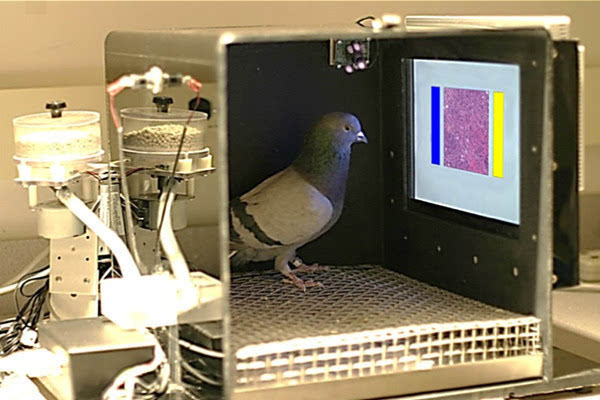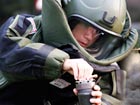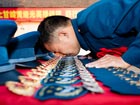
由于电子通信使鸽子的技能成为过时的信使,它们的工作机会已经很少了。但现在看来,鸽子可以把分析医学图像作为工作。因此现在可以训练鸽子团队可以区分健康和癌变的乳腺组织。
加利福尼亚大学李察列文森、戴维斯和他的同事们发现,鸽子对乳腺组织显微镜图像可以准确鉴别。对应于任一肿瘤或正常组织可以正确地啄了一个彩色按钮,每天15次,每次持续一个小时,鸽子在正确诊断的同时,节约85%的时间。
汇集来自四只鸽子的结果,研究人员发现鸽子一样善于发现出现在乳房X线照片小的钙沉积与癌症有关的白色斑点。,提高精度为99%。
识别乳腺癌肿块的乳腺很难。当他们在这项研究中评估图像,诊断非常微妙并具有挑战性的,即使对人类的检测,放射科医生只有80%的正确率。
而鸽子的视觉能力能很好的研究:他们能够识别人的面孔,字母表中的字母甚至区分画家莫奈和毕加索。
鸟类能起到有益的辅助作用。之后研究人员开发的软件也可以处理医学图像,帮助医生能够更容易地诊断,但如果软件诊断解决需要几个小时。
列文森说,引进鸽子诊断,鸽子对医学图像诊断的特征敏感性是很强的,使研究人员依据鸽子的反馈开发更好的诊断软件。可以创新新性帮助研究人员和工程师。
参考文献:PLoS ONE,DOI:10.1371/journal.pone.0141357
Pigeons taught to diagnose breast cancer on X-rays
Job opportunities for pigeons have been few and far between since electronic communication made their skills as messengers obsolete. But now it seems they could be put to work analysing medical images. So says the team who trained pigeons to distinguish between healthy and cancerous breast tissue.
Richard Levensonat the University of California, Davis, and his colleagues showed pigeons microscope images of breast tissue. Then they rewarded them when they correctly pecked a coloured button that corresponded to either cancerous or healthy tissue. After 15 daily sessions, each lasting an hour, the pigeons got the right answer 85 per cent of the time.
Pooling responses from a panel of four pigeons, or “flock-sourcing” as the researchers call it, increased accuracy to 99 per cent. The pigeons were just as good at spotting small calcium deposits associated with cancer, which appear as white specks on mammograms.
A third task – recognising cancerous breast masses on mammograms – proved too difficult. These features are very subtle and challenging even for humans to detect – radiologists only got 80 per cent correct when they assessed the images in this study.
Pigeons’ visual skills are well studied: they canrecognise human faces,letters of the alphabetand evendistinguish paintings by Monet and Picasso.
While doctors won’t be turning to pigeons for a cancer diagnosis any time soon, the birds could play a useful role in the development of image analysis technology. Researchers develop software that manipulates medical images so doctors can interpret them more easily, but it takes several hours to work out if the software helps or hinders a diagnosis.
Here’s where the pigeons come in, says Levenson. He says that pigeons’ sensitivity to features in medical images that are important for diagnoses make them ideal for providing feedback on several aspects aof their software development. “They can assist researchers and engineers as they innovate,” he says.
Journal reference:PLoS One,DOI: 10.1371/journal.pone.0141357
(Image: UC Davis)















